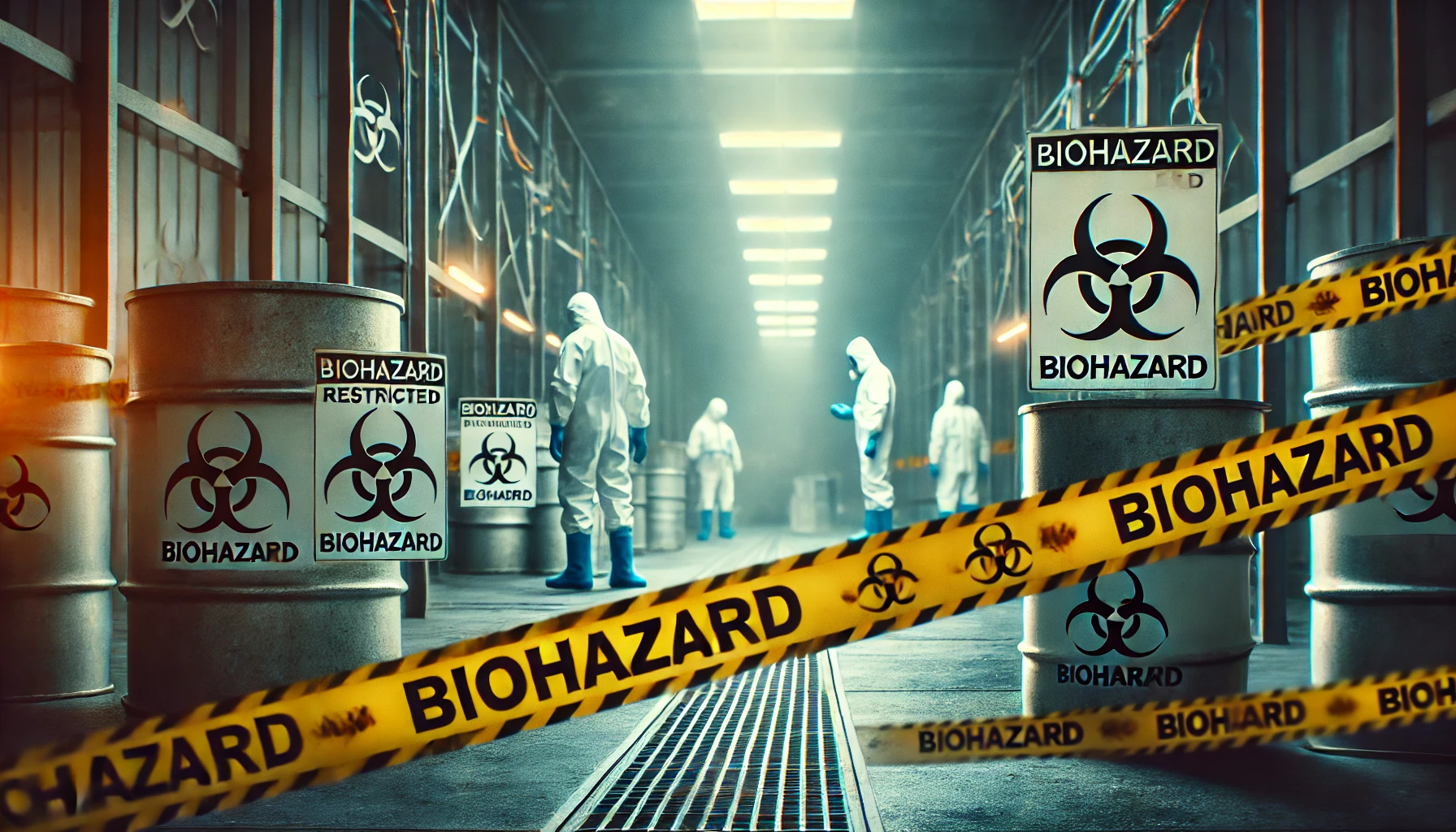Biohazards Around You And Their Health Risks
Biohazards, short for biological hazards, refer to any biological substance that poses a threat to human health or the environment. These hazards can come from microorganisms, toxins, or other organic materials that can cause disease, allergic reactions, or environmental damage. Understanding biohazards is essential for maintaining public health and safety.
In many cases, biohazards are invisible to the naked eye, making them particularly dangerous. From contaminated water and mold to infectious diseases, biohazards can be found everywhere. Proper identification, containment, and cleanup are crucial to preventing their spread and minimizing risks to human health.
Types of Biohazards
Biohazards are classified into four primary categories based on their source and potential harm:
1. Microbiological Hazards
These include bacteria, viruses, fungi, and parasites that can cause infections and diseases. Examples include:
- Bacteria: Salmonella, E. coli, Tuberculosis, and MRSA (Methicillin-resistant Staphylococcus aureus)
- Viruses: Influenza, Hepatitis B and C, HIV, and COVID-19
- Fungi: Mold, Aspergillus, Candida, and Histoplasma
- Parasites: Giardia, Cryptosporidium, and tapeworms
Many of these pathogens can be found in hospitals, public spaces, homes, and workplaces. Some bacteria and viruses spread through direct contact, while others become airborne or spread through contaminated surfaces.
2. Chemical and Biological Toxins
Certain biohazards are produced by microorganisms or living organisms but act as toxins. These can be naturally occurring or human-made:
- Mycotoxins: Produced by mold and can contaminate food and air, leading to respiratory issues and allergic reactions.
- Biotoxins: Found in venom from snakes, spiders, and marine animals.
- Endotoxins & Exotoxins: Harmful bacterial byproducts that can trigger severe immune responses in humans.
Toxins can contaminate air, water, and food sources, making them especially dangerous in poorly ventilated areas or places with improper sanitation.
3. Human and Animal Waste
Waste materials from humans and animals can carry pathogens and pose a risk of contamination:
- Bloodborne pathogens: Diseases such as Hepatitis B and C, and HIV can spread through blood and bodily fluids.
- Sewage and fecal matter: Contaminated water sources can spread diseases like cholera, dysentery, and E. coli infections.
- Animal carcasses and remains: Dead animals can harbor zoonotic diseases, which can spread to humans through direct contact or airborne particles.
Improper disposal of human and animal waste increases the risk of outbreaks and environmental pollution.
4. Environmental Biohazards
Biohazards can also arise from environmental conditions that promote the growth or spread of harmful organisms:
- Contaminated water sources: Bacteria, parasites, and industrial pollutants in water can cause diseases such as giardiasis and Legionnaires' disease.
- Mold growth in buildings: Mold spores can lead to respiratory issues, allergies, and structural damage.
- Airborne spores and allergens: These can trigger asthma, infections, or severe allergic reactions, especially in individuals with compromised immune systems.
Mold and air pollutants often go unnoticed until they start causing visible damage or health issues. Proper ventilation, moisture control, and regular inspections can help prevent their spread.

Where Are Biohazards Found?
Biohazards exist in a variety of settings, including:
- Hospitals and laboratories: Blood samples, used needles, and infectious materials must be handled carefully to prevent cross-contamination.
- Food production and agriculture: Contaminated meat, dairy, and water sources can introduce harmful bacteria into the food supply.
- Homes and workplaces: Mold, dust mites, and improper waste disposal can create hazardous living and working conditions.
- Natural environments: Insect-borne diseases (like malaria and Lyme disease) and contaminated water bodies can serve as biohazard hotspots.
How Denver Decon Can Help with Biohazard Cleanup
Dealing with biohazards requires professional expertise to ensure a safe and thorough cleanup. Denver Decon specializes in biohazard remediation, offering biohazard cleanup services such as:
✔ Crime Scene & Trauma Cleanup – Proper disposal of biohazardous waste, including blood and bodily fluids, ensuring the affected area is safe for occupancy.
✔ Mold Remediation – Identifying, removing, and preventing toxic mold growth to protect indoor air quality.
✔ Hoarding Cleanup – Safely clearing hazardous waste from extreme clutter situations that can harbor biohazards.
✔ Sewage Backup Cleanup – Sanitizing areas affected by harmful waste and bacteria from plumbing failures or natural disasters.
✔ Odor Removal & Decontamination – Neutralizing harmful airborne contaminants, bacteria, and lingering odors from decomposition, smoke, or chemicals.
Our team follows strict safety protocols and uses industrial-grade cleaning agents to restore homes, businesses, and public spaces to a safe condition.
With Denver Decon, you can trust that your property will be thoroughly cleaned and free from biohazards.
How to Prevent Exposure to Biohazards
✔ Proper hygiene: Regular handwashing, sanitizing surfaces, and avoiding direct contact with potentially contaminated materials.
✔ Safe food handling: Cooking food to appropriate temperatures, avoiding cross-contamination, and maintaining proper storage conditions.
✔ Protective equipment: Using gloves, masks, and disinfectants in high-risk areas to reduce exposure.
✔ Ventilation and moisture control: Prevent mold growth indoors by ensuring proper airflow and reducing excess humidity.
✔ Safe waste disposal: Proper handling of medical waste, expired food, and organic matter to prevent disease spread.
The Importance of Professional Biohazard Cleanup
Many biohazards require specialized cleanup procedures that go beyond everyday cleaning methods. In cases involving infectious diseases, hazardous waste, or crime scene contaminants, professional decontamination is necessary to eliminate risks effectively.
Why Choose Professional Biohazard Cleanup?
- Safety: Biohazard cleanup specialists have the training and equipment needed to handle dangerous materials safely.
- Thorough decontamination: Industrial-grade disinfectants and specialized techniques ensure complete removal of hazardous substances.
- Compliance with regulations: Proper disposal of biohazardous waste follows legal guidelines to prevent environmental contamination.
- Peace of mind: Knowing your space is fully sanitized allows you to focus on recovery and normalcy.
Mitigate Biohazard Risks And Maintain A Safe Environment
Biohazards are an everyday part of life, but with the right knowledge and professional support, you can mitigate risks and maintain a safe environment. Whether in a medical setting, workplace, or home, staying informed and practicing good hygiene is the first step in reducing exposure.
If you’re dealing with a biohazard situation, Denver Decon is here to help. Contact us today for expert biohazard cleanup services in Denver!
